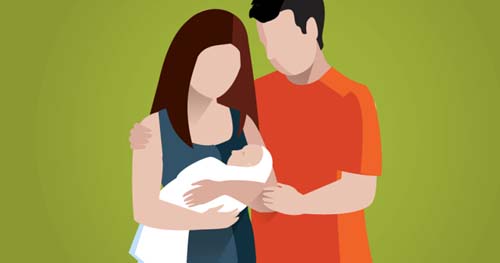Italy: How much parental leave do you get?

Rome: For those considering raising a family in Italy, here’s what the law says about how much time new parents can take off work – and how it compares to other countries.
The Italian government has introduced various measures to help people have a family over the past year, in a bid to reverse the country’s declining birth rate and to make having children more feasible.
Among the reforms is the introduction of the universal single allowance (assegno unico e universale) – a payment granted per child from the seventh month of pregnancy – and more paternity leave for fathers.
These steps form part of the country’s wider strategy – the so-called Family Act – which aims to make starting a family in Italy more affordable.
In Italy, parental leave entitlement varies hugely for mothers and fathers. Five months of mandatory maternity leave are granted for mothers, while dads get just ten days.
Those five months of maternity leave can be split before and after the birth and are paid at 80 percent of the woman’s salary, while paternity leave is paid at 100 percent of the father’s salary and can be taken from the birth date of the child, within the first five months of its life.
Dads could be entitled to the five months of maternity leave if they end up being the sole carer, such as instances of maternal illness or abandonment.
But does more time off for dads bring Italy in line with parental leave on a global scale? And how generous is the system for mothers compared to other countries? Here’s what you’re entitled to and how Italy stacks up internationally.
Looking at the absence from work you’re allowed for having a baby in Italy, the split between maternity and paternity leave is significant – as is the case for most countries.
In Italy, maternity leave (congedo di maternità) “is the period of compulsory abstention from work granted to employees during pregnancy and postpartum,” according to Italy’s national welfare system INPS.
On an EU level, European legislation stipulates that mothers are entitled to a minimum of 14 weeks maternity leave, of which two are mandatory.
However, countries are able to make their own exceptions and Italy has exempted freelancers, who are not obliged to take any time off for maternity leave at all.
Aside from this category who can choose to forego maternity leave, five months of abstention from work are compulsory, making Italy’s one of the highest mandatory maternity periods in the EU.
This can begin two months before the birth with three months after or one month before and four months afterwards. In certain cases, maternity leave can begin even earlier than two months before the due date if the Local Health Authority (ASL) orders it, if the pregnancy is high risk or if the mother’s job deems it necessary to stop working.
For women who would prefer to take the whole five months of leave once the baby is born, they can now do so since a law allowing this was passed in 2019. This means you can take zero leave before the baby is born, as long as your doctor certifies that this would cause no harm to you or your baby.
You are also entitled to five months’ maternity leave if you adopt, which is granted from the day the child enters your family.
Within these five months of maternity leave, you are entitled to 80 percent of your wage, which is paid by your employer. If you’re a freelancer, you’re also entitled to 80 percent of your income, based on an average calculation of what you make over 365 days and it’s paid directly from INPS.
Going back to work when a baby is between three and five months old may seem very early to some, or generous to others.
Looking at Italy’s neighbours, some European countries are on a par. According to the latest EU data for March 2022, Spain grants 16 weeks’ maternity leave; this comes at 100 percent pay reported an international HR study.
Germany instead provides 14 weeks of leave at 100 percent pay. However, in Germany you can request up to three years of parental leave with an allowance available for most of that.
Therefore, at the base level, they both grant more monthly pay for less time off, as does France at 16 weeks for 100 percent salary.
Denmark offers 18 weeks’ maternity leave and how much of your salary you receive in this time depends on your contract, reaching as much as €599 per week.
Austria provides 16 weeks of leave at 100 percent of your salary, while Switzerland grants 14 weeks of leave at 80 percent salary.
So far, so comparable. But when you look at countries such as Finland, Sweden and Norway, you might consider swapping Italy for a Scandinavian country to raise your offspring.
Finland offers both parents 164 days, making that just over 23 weeks (not including weekend days) each. Although this parity is intended to shift childcare to a more balanced responsibility rather than it falling solely on the mother, parents can transfer 69 days to the other parent. Therefore, maternity leave could be bumped up to 233 days.
Norway gives mothers a whopping 49 weeks at 100 percent of their salary, or 59 weeks at 80 percent of their salary.
And the real reason you may decide you don’t mind trading in Italian sun for the Swedish chill is the generous parental leave of 240 days per parent, with all but 90 days able to be transferred to the other parent.
Therefore, one of you could have 330 days off at 80 percent of your salary. Unpaid leave is also available until the child is 18 months old.
Now outside the EU but still close in proximity is the UK, who also offer a comparatively very generous 39 weeks of maternity leave at 90 percent pay for six weeks with varying lower amounts after that, depending on the employer. A further 13 weeks are allowed unpaid to make up one year of maternity leave.





